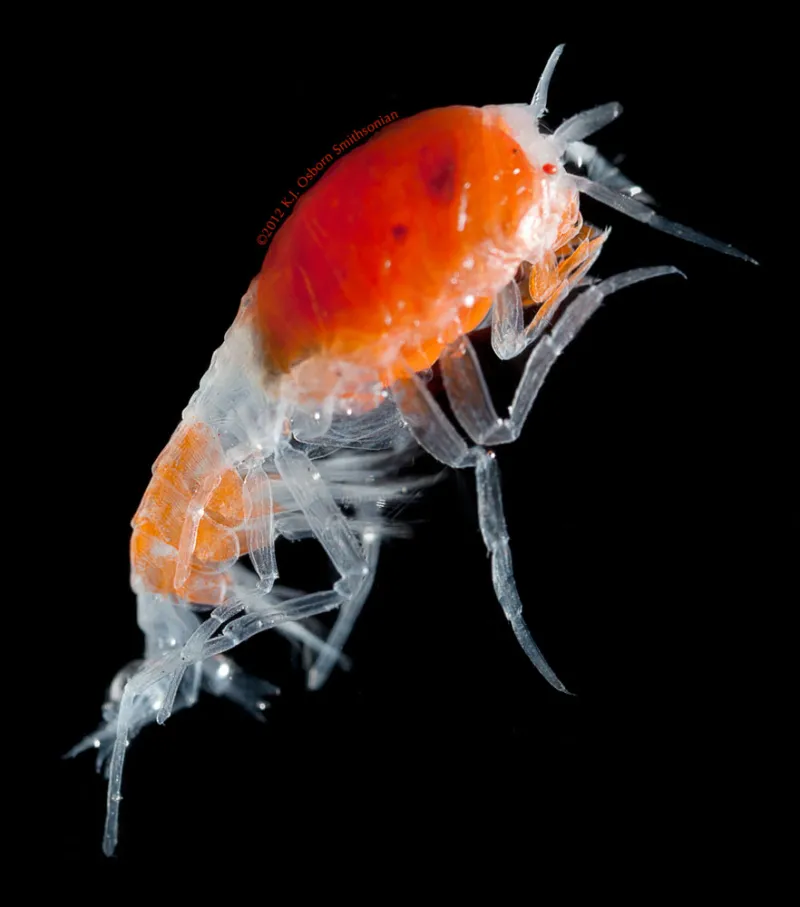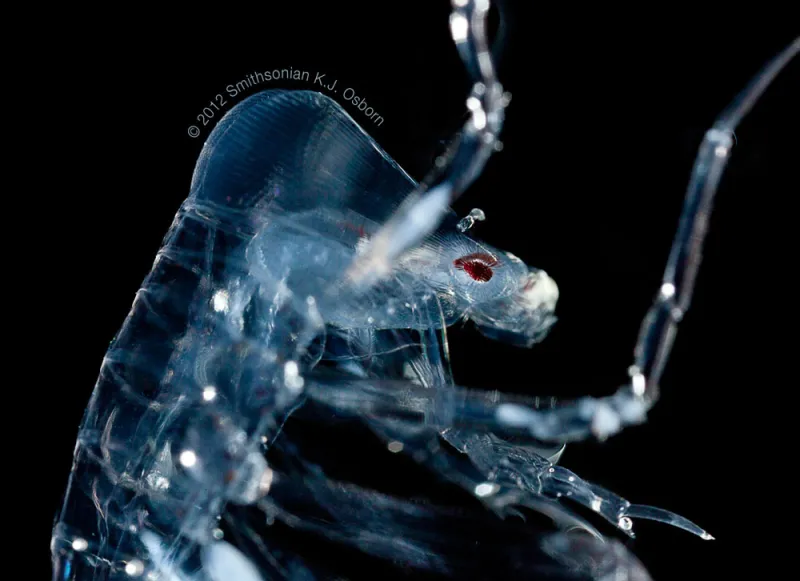This hyperiid is one of seventeen species in the genus Lanceola, which are found between 200 and 7,000 meters below the ocean’s surface. Some species, like this one, are found exclusively below 3,000 meters and are adapted to the cold and dark that comes with that depth. Meanwhile, others may vertically migrate closer to surface waters at night. Because they spend so much time in the dark, Lanceola species tend to have very small eyes—or none at all. In this image, the tiny bright red dot on the right side of the head is a tiny compound eye.
The Hyper Eyes of Hyperiids: How Some Shrimp-Like Creatures See Light in the Deep Sea
Hyperiid amphipods are small crustaceans related to sand fleas and distantly related to shrimp. They range in size from very tiny to more than 7 inches long, and are found at all depths of the ocean from the surface to the deep sea. Roughly 320 species have been identified and some have very interesting eyes—evolutionary solutions to the challenge of seeing in the nearly absent light of the mid-ocean and complete darkness of the deep sea.
Hyperiids typically have two pairs of compound eyes. Each compound eye has many photoreceptors—sometimes numbering in the thousands—each of which captures an image of a small part of the scene. The brain pulls these many images together into one single image, like a panorama.
But the variation in hyperiid eyes is staggering, making them a fascinating group to study. Some hyperiids have greatly enlarged eyes that cover the entire head, while others have very tiny eyes. In some species, fiber optic cables connect the lenses to the retinas, which pass the images on to the brain. Some species have cone-shaped retinas that allow them to see almost 360 degrees. Still others have retinas with mirrors that boost light collection, helping them to see in the dark. Some have a single giant pair of eyes and others lack eyes altogether.
Jamie Baldwin Fergus, a postdoc at the National Museum of Natural History, is looking into how exactly hyperiid amphipods see in the light-limited mid-ocean. Enjoy the photos of the animals she’s researching in this slideshow, and read more about her research on the Smithsonian's Department of Invertebrate Zoology No Bones blog.

















